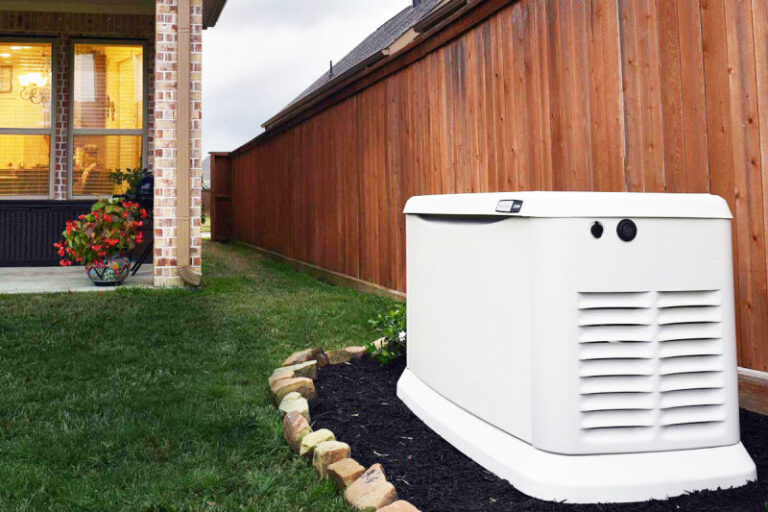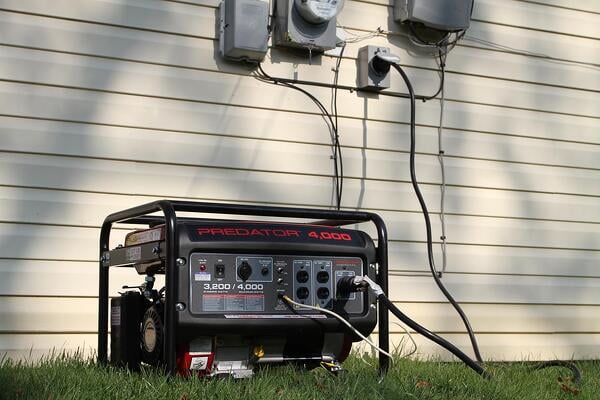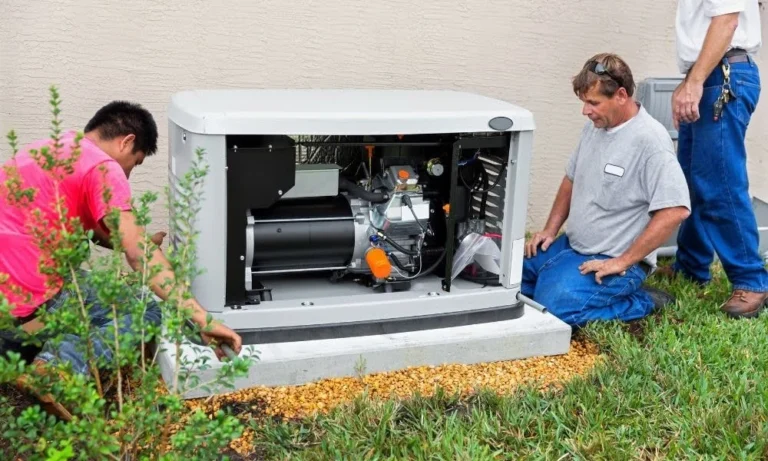Unleashing Power: A Comprehensive Guide to Determining the Right Generator Size
Imagine being in the middle of a critical task, and suddenly, the power goes out. In our digitally-driven world, a reliable power supply is not just a convenience but a necessity. It is where generators come into play, acting as your silent knights, ready to jump into action when power interruptions occur. But how do you pick the right one from the myriad options available?
When it comes to generators, size matters more than you might think. Generator sizes span a broad spectrum, from compact units for simple home use to massive ones designed for industrial applications. Understanding and aligning this range with your needs is crucial in making an informed decision. Our comprehensive guide aims to walk you through the importance of choosing the right generator size and provides a snapshot of the diverse sizes in the market today.
Understanding Power Needs
Power needs can be complex, but with some knowledge and understanding, you can ensure that your home or business has the right amount of electricity it needs to function efficiently. Let’s delve into the essentials of power requirements and how to gauge them accurately.
Assessing Basic Power Requirements
Determining your basic power requirements involves identifying all the electrical appliances you use regularly and their power consumption. It can be done by multiplying each appliance’s voltage (volts) and current (amps), giving you their power rating in watts. It’s vital to remember that this is a snapshot of the power consumed at any given moment, not over time.
Factoring in Peak Power Consumption
Peak power consumption refers to the highest amount used during a specific period. It could be when several high-powered appliances are running simultaneously or when an appliance with a high startup power requirement, like an air conditioner, is turned on. Understanding peak power consumption helps you prepare when your power demand exceeds the average.
Identifying Essential vs. Non-essential Appliances
Not all appliances are created equal when it comes to power consumption. Essential appliances like refrigerators, heating systems, and lighting fixtures must be prioritized as they consume power constantly and are necessary for daily living. On the other hand, non-essential appliances such as entertainment systems can be managed more flexibly to reduce overall power consumption.
Deciphering Generator Types
Generators have two main categories – portable and standby generators. By understanding their differences, you’ll be equipped to make an informed decision that suits your needs.
Portable Generators
Portable generators are loved for their mobility and convenience. They’re easy to transport and perfect for camping trips or temporary power needs at outdoor events. However, they often have a smaller power output and require manual startup. Their fuel efficiency is also generally lower than that of standby generators.
Portable generators shine in situations where flexibility is vital. They are an excellent fit for tiny homes, businesses that need temporary power solutions, or outdoor enthusiasts who need power on the go. Remember, while they might not power your entire house, they can keep important appliances running during a power outage.
Standby Generators
On the other hand, standby generators are the generator world’s heavyweights. They offer higher power output and kick in automatically during power outages, providing a seamless power supply. However, they are more expensive and require professional installation.
Standby generators are ideally suited for larger homes, offices, or facilities that cannot afford a power interruption. Whether preserving the contents of a large commercial freezer or keeping life-saving medical equipment operational, standby generators ensure that power outages don’t disrupt critical services.
Calculating Power Requirements
Calculating power requirements is essential in managing any electrical setup, whether at home or in a professional setting. A fundamental aspect is understanding the wattage, which measures electrical power. The formula for calculating wattage is relatively straightforward: Wattage = voltage x Amperage. By knowing the voltage, the pressure from an electrical circuit’s power source, and the amperage, the measure of the flow of electrons in the circuit, you can easily calculate the wattage of your equipment.
Yet, understanding power requirements is about more than just wattage. Consider the specifics of voltage and amperage. For instance, it’s crucial to ensure that the voltage rating of your equipment matches your power source to avoid potential damage. Similarly, it’s essential to recognize that a device with a higher amperage will use more power, even if the voltage remains constant. So, when planning your electrical setup, use the wattage calculation to ensure your power source can accommodate the combined wattage of all your devices.
Common Generator Sizes
From powering your camping trip to running an entire construction site, generators come in sizes to fit every need. Let’s explore the range of standard generator sizes – small, medium, and large, and understand their applications and ideal scenarios.
Small Generators (1,000-3,000 Watts)
Small generators are portable powerhouses perfect for light use. They can easily handle charging your phone or powering a few small appliances. However, they may need to be sufficient for larger appliances or heavy-duty tools. Their compact size and portability make them ideal for recreational activities or as backup during short-term power outages.
Medium Generators (3,000-8,000 Watts)
Medium generators pack more punch, powering multiple appliances or a small home. They’re famous for homeowners, providing enough power to keep vital appliances running during an outage. Whether it’s running your refrigerator, heating system, or home office, these generators can tackle it all without breaking a sweat.
Large Generators (8,000+ Watts)
When it comes to large generators, we’re talking about serious power. These heavy-duty units can power an entire house or a small commercial property. They’re often used in industrial settings, construction sites, or large events where significant power is needed. Despite their size, they’re designed for reliability and efficiency, making them a solid investment for businesses and larger homes.
Sizing for Specific Scenarios
Understanding your power needs is the first step to sizing for specific scenarios. At home, backup power becomes a necessity in times of unexpected power outages. To estimate your needs, list the essential appliances you can’t do without during an outage. It usually includes your refrigerator to keep your food fresh, a heating or cooling system to maintain a comfortable temperature, and lights for visibility. Once you’ve listed these items, add up their wattage to get an idea of the size of the generator or backup power system you’ll need.
On the other hand, the power requirements for RV and camping trips or construction sites are different. A small portable power station might be enough for casual camping to charge phones and run some lights. However, running a full RV with amenities like air conditioning, a fridge, and other appliances requires a more robust power source. Similarly, construction sites require substantial power to run various tools and machinery simultaneously. Always consider the total energy demand of all devices and tools simultaneously to ensure you have adequate power.
Fuel Types and Efficiency
When it comes to generators, the type of fuel they use can significantly affect their performance and efficiency. Let’s start by comparing gasoline and diesel generators. Gasoline generators are typically cheaper, lighter, and easier to maintain. However, diesel generators have a longer lifespan, are more fuel-efficient, and often generate more power. It makes diesel generators a popular choice for heavy-duty applications despite being more expensive upfront.
Moving on to inverter generators, these models balance power and efficiency. Unlike conventional generators, inverter generators produce cleaner, more stable power, ideal for sensitive electronics like laptops and smartphones. They’re also more fuel-efficient, quieter, and generally more compact and lightweight than traditional generators. However, they usually have a lower power output. Understanding these differences can help you choose the right generator for your specific needs, whether you are planning a camping trip or preparing for a potential power outage at home.
Environmental Considerations
Noise levels and emission standards are critical environmental considerations when choosing a generator. For noise, the level can vary greatly depending on the type and size of the generator. A quiet operation is crucial in a residential or peaceful outdoor area. Some generators have special features designed to reduce noise, so be sure to look out for these if quiet operation is crucial to you.
On the other hand, emission standards focus on the environmental impact of the generator. Gasoline and diesel generators can emit harmful substances, contributing to air pollution. It’s important to choose a generator that complies with local emission regulations. By doing so, you’re not only adhering to the law but also doing your part in protecting the environment.
Budgetary Considerations
Consider your budget as one of the initial factors when purchasing a generator. The upfront costs of a generator can vary greatly depending on its size, type, and features. While it might be tempting to choose the cheapest option, remember that this is a long-term investment. You’ll want to ensure your chosen generator is reliable and suits your needs.
But the initial purchase price is one of many costs to consider. There are also long-term maintenance and fuel costs to keep in mind. Some generators, like diesel ones, might be more expensive to buy but cheaper to run in the long run. Also, specific models require more regular maintenance, which could add to the overall cost.
Regulatory Compliance
Understanding local regulations is a crucial step when planning to install a generator. These rules can vary significantly between different locations, so it’s important to research them thoroughly. You’ll need to know what kind of generator you’re allowed to have, where you can install it, and whether there are any restrictions on noise or emissions. This knowledge will help you make an informed decision and avoid potential legal issues.
Permits and zoning considerations are another part of regulatory compliance. In many areas, you’ll need a permit to install a generator, especially if it’s a larger, permanent model. Zoning laws may also affect where you can place your generator. For example, there might be rules about how close a generator can be to a property line or a neighbor’s house. By understanding these requirements, you can ensure that your generator installation goes smoothly and legally.
Summary of Key Points
Understanding the right size for your generator is crucial to ensure uninterrupted power supply during blackouts. We have emphasized the importance of considering all your power needs, from essential appliances to high-demand tools, before deciding. Remember that an undersized generator can damage equipment, while an oversized one may lead to unnecessary expenses. Remember that safety should be your top priority when dealing with generators.
Moreover, every situation is unique and requires a tailored approach. Hence, it’s vital to consider your specific needs and circumstances. Tailoring your choice to your specific needs not only ensures efficiency but also longevity and reliability.








